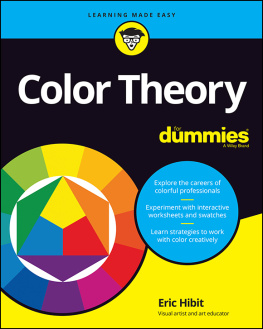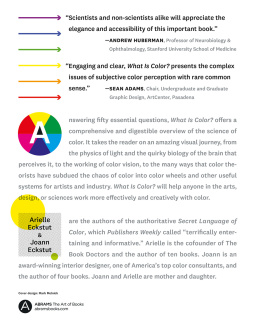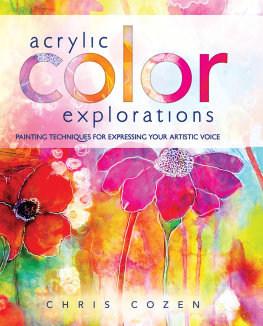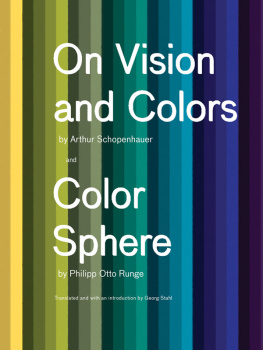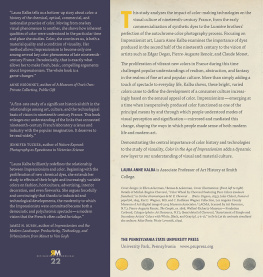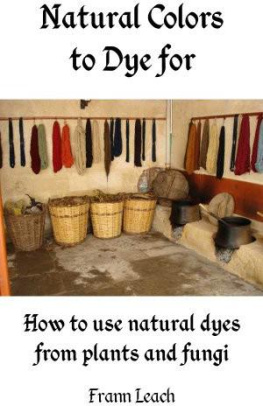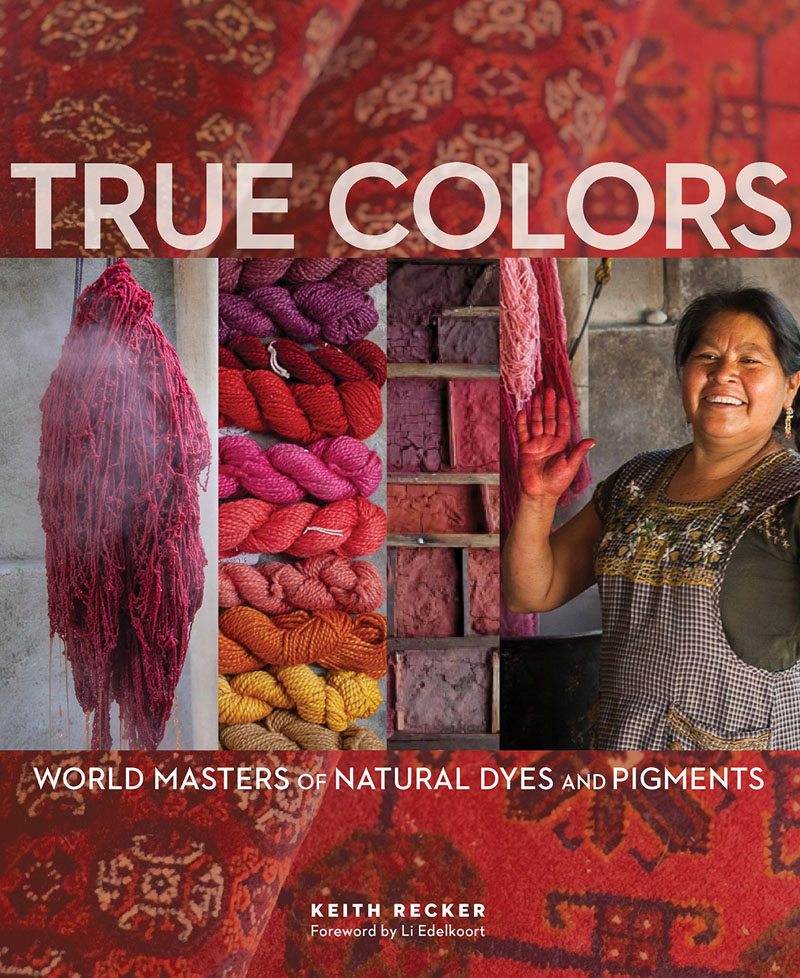



P UBLISHER : Linda Ligon
A SSOCIATE P UBLISHER : Karen Brock
E DITOR : Carol Karasik
C OPY EDITOR : Katherine Bright
D ESIGNER : Susan Wasinger
2019 Keith B. Recker
O N THE COVER : Juana Guitrrez Contreras, Teotitln del Valle, Oaxaca, Mexico. Center photos by Joe Coca and Heidi Gustafson. Upper and lower photos by Keith Recker.

4420 Roaring Fork Court
Loveland, Colorado 80538
USA
Printed in China by Asia Pacific
ISBN 978-1-7335108-5-1
Library of Congress Control Number: 2019902328

Shades of indigo, dyed by Andro Wipplinger using the formulas and methods of MicheleWipplinger.
ACKNOWLEDGMENTS
D eepest thanks to the talented, inspiring, and colorful subjects of this book. Their generous sharing of work, stories, and time has moved me deeplynot to mention the breathtaking hues they create. A special prayer of thanks to Porfirio Gutirrez, Juana Gutirrez Contreras, and Antonio Contreras, who opened their Teotitln del Valle home and studio to us. I look forward to more cochineal, chocolate, mezcal, laughter, and affection in the future.
The team at Thrums Books communicates at wavelengths I have not often experienced, and I could not be more grateful for their patience and steadfast support in the process of making this book. Linda Ligon steers this ship with remarkable wisdom and perspective. Thanks to Mary Anne Wise for the connection.
An important part of my life in color and culture has unfolded in the company of the artists, artisans, staff, volunteers, leaders, and board members of the International Folk Art Market, whose annual event in Santa Fe, New Mexico, continues to delight and educate me. I am so deeply thankful for the good work of this organization, and for the devotion and talent that make it so vibrant.
The crew at HAND/EYE Magazine also bring the worlds colors and textures alive in connective and constructive ways, and I salute themas I do my friends at Pantone, who spur me on into applying what I learn about the rainbow in ever-new and ever-inventive assignments. A special nod also to Li Edelkoort and Philip Fimmano for their insight and intellect and warmth, to Sherri Donghia for her great eye and loyal friendship, and to Katharine Kuharic, who has been teaching me things about color since 1980. And, of course, a wave of gratitude to my parents, Brooke and Bill Recker, for their unique genius, and my siblings, Kevin and Kirsten, for theirs.
I dedicate this book to my partner, James, and our daughter, Katherine, without whom my life would be colorless, and to Clare Brett Smith, who set me off on a wild and life-changing cultural trek almost thirty years ago.
FOREWORD
W henever I have encountered color in my life it has made a lasting impression. Even now, color can trigger memories of my childhood (my mother in a hand-painted skirt), of art school (learning elaborate color concepts), of the magnificence of nature (incandescent green rice fields in India dotted with bright saris), or of the splendor of humanity (a fisherman dressed in different shades of gray sampled from discarded suits).
The deep color of food, the moving shades of the ocean, the glow of a certain variety of pumpkinand so much morehave all been inspirations, sometimes sensational, always emotional, often personal. But working as a colorist has also led me to encounter the abstraction of color, and today it seems that color has started to live its own life, to evoke a holistic identity with many facets to its personality. Color unifies and divides, it symbolizes and materializes, it codifies and simplifies. Color talks loud and clear as it descends into the streets: when pink beanies fight for emancipation or when yellow umbrellas and vests fight for human rights and equality. Color is universalyet local at the same time.
Nowadays, the public at large has learned how to discern color perfectly. Like curators of their homes, they have understood how to handle color choices and reinterpret their cultural identity through color. They know that green can be pistachio, avocado, spinach, or wasabi; that red might be coral, that pink could be flamingo, that brown will be chocolate, and that flesh-tone is anything but a weird type of salmon. It almost seems as if our retinas are evolving, enabling us to see more shades of each hue.
Just last year, it was revealed that the ever-popular millennial pink is actually a shade of the oldest color on earth! More ancient than the dinosaurs, this natural pigment was unearthed after a billion years by Australian scientists analyzing shale rock from the Sahara Desert, suddenly giving pink a completely archaeological and cultural dimension. The mines carved out by the very first humans were exploited in order to extract minerals for making color: color to paint their bodies and illustrate their society, color to dye cloth and embellish food, color to cover walls and decorate their abodes.
These first uses of color are also why the book of Genesis recently inspired me as a metaphor to conceive colors, able to describe all the harmonies in our world and their tactile aspects: from the soft browns of animals to the crisp greens of plants to the metallic translucency of fish scales and the textured golds of the sun and moon. Not to be forgotten are the dense notes of darkness, harking back to anti-material, as if born before the Big Bang. Equally important in that biblical story is the color of our own skin. Ranging from porcelain white to ebony black, the scale of human tints is endless and demands specific colorings for specific incarnations. In this sense, colors range is truly inclusive of all human beings.

Bark and bark-dyed cloth by Boubacar Doumbia
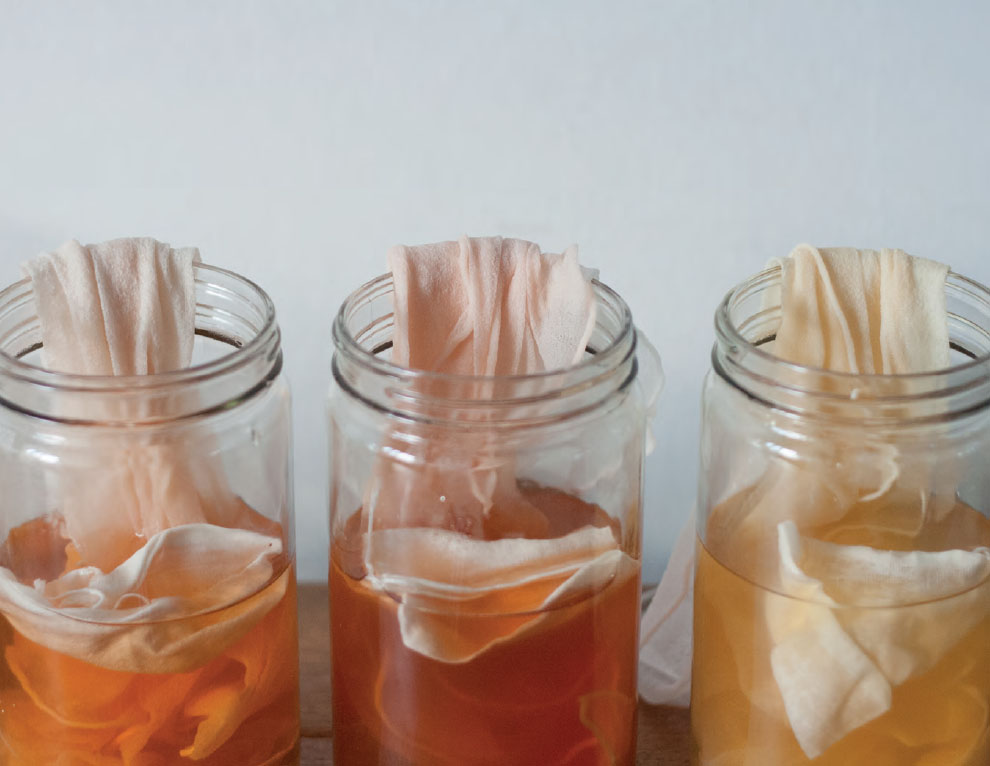
The color yielded by avocado pits varies with the mineral composition of water sources
Just last year, it was revealed that the ever-popular millennial pink is actually a shade of the oldest color on earth! More ancient than the dinosaurs, this natural pigment was unearthed after a billion years by Australian scientists analyzing shale rock from the Mauritanian Desert,
In the Genesis narrative, splendid colors come from the Earth (through mining), modified by the waters (through washing), embellished by the sky (through bleaching) and taken from roots, plants, and insects (through dyeing). It is in this last process that the culture of color has influenced creative beings the most. The discovery of color as a means for expression, and as a need to feel singular and unique, is as old as we are and has forced the human race to discover using feathers and pigments, grasses and bark, blood and urine, and many more plant-derived dyeing techniques. Today, peoples keen interest in natural dyes is growing to counterbalance and eventually eradicate the detriment of synthetic colors. The fight for our survival as an endangered species is declared, and endeavors to save the planet are getting more attention. The liveliness of the tints and their capacity to transform, having lives of their own as we doincluding rusting, crinkling, and fadingmakes these colors feel like companions, with us forever, for better or worse.
Next page



